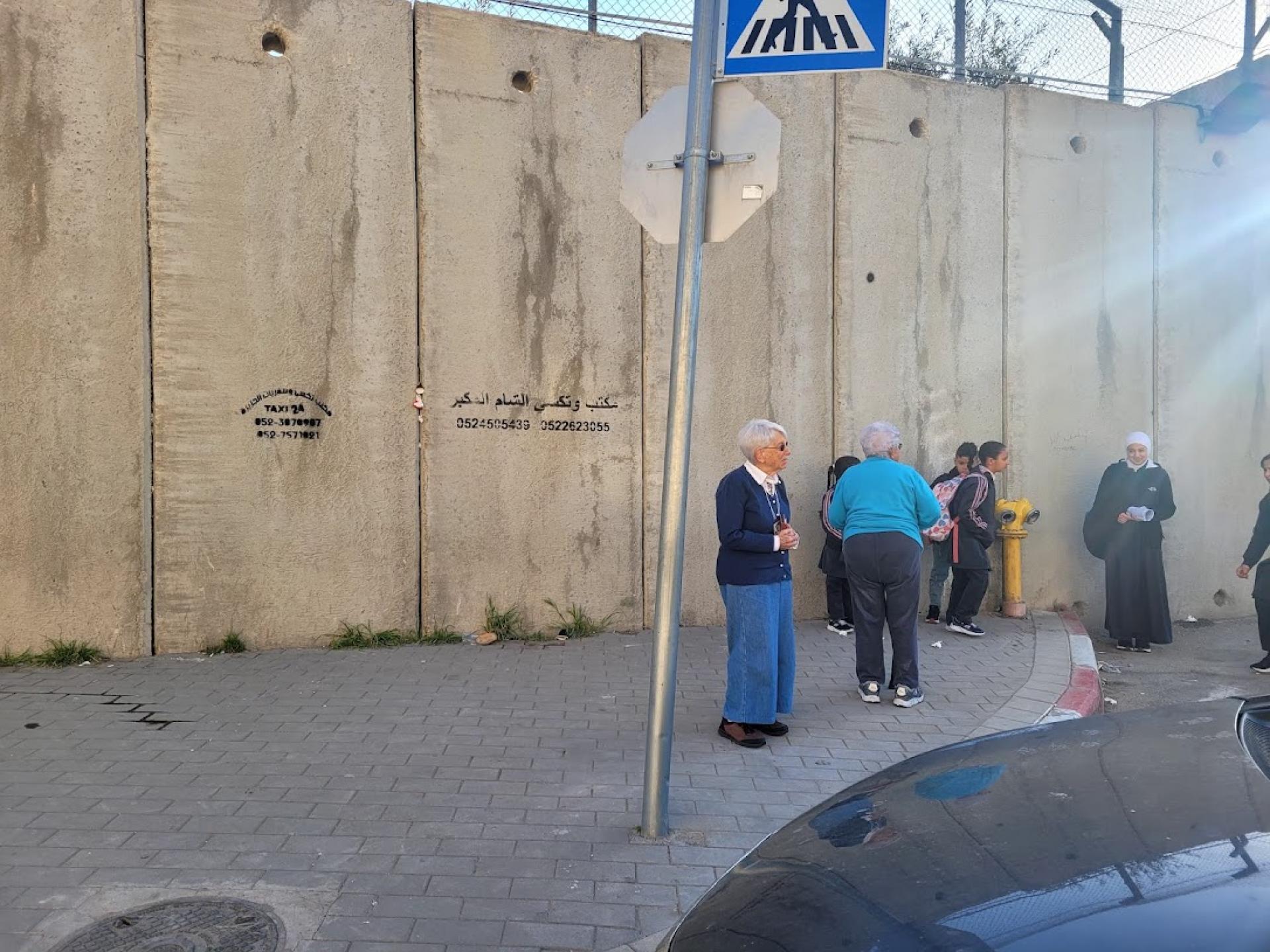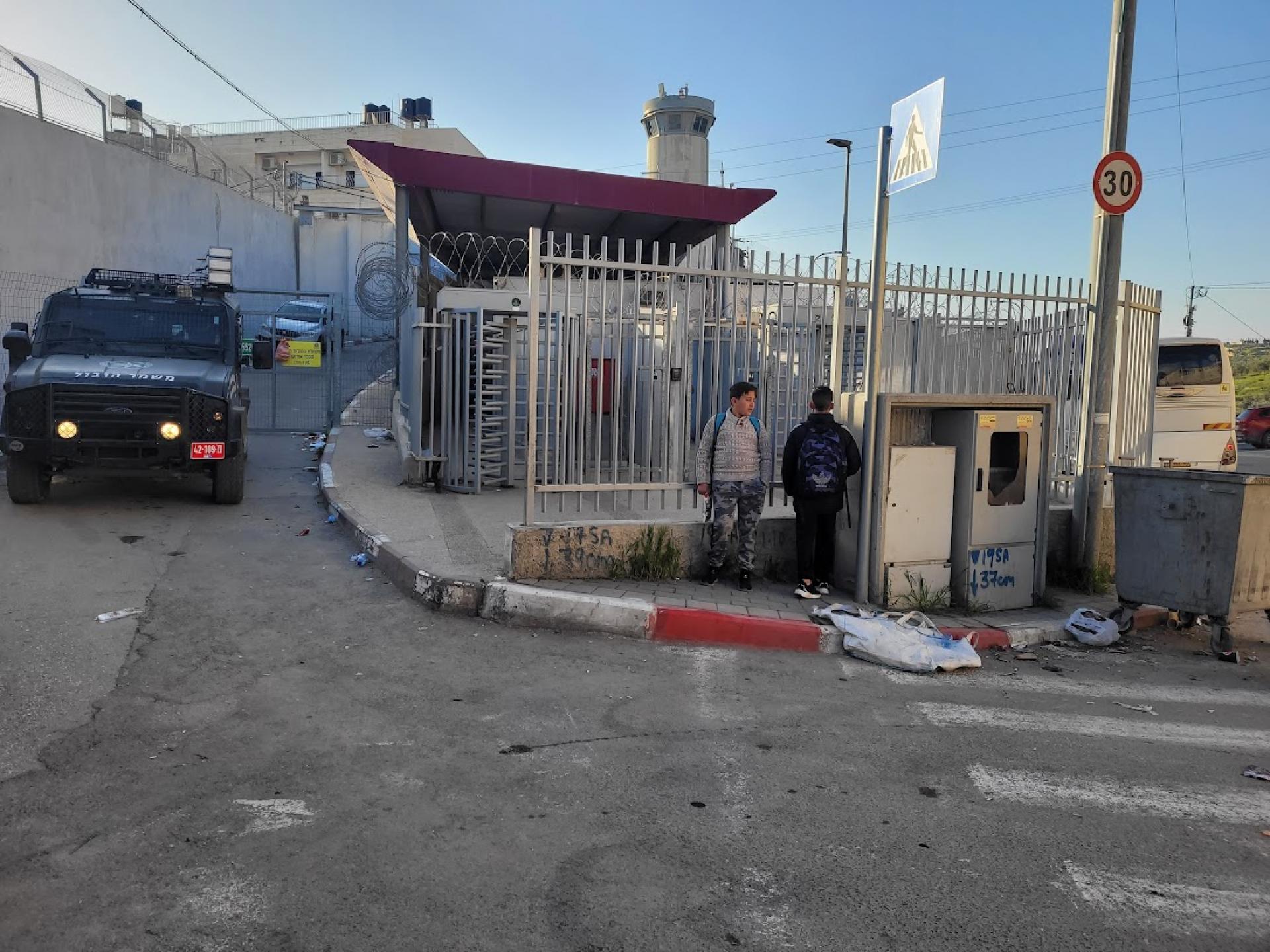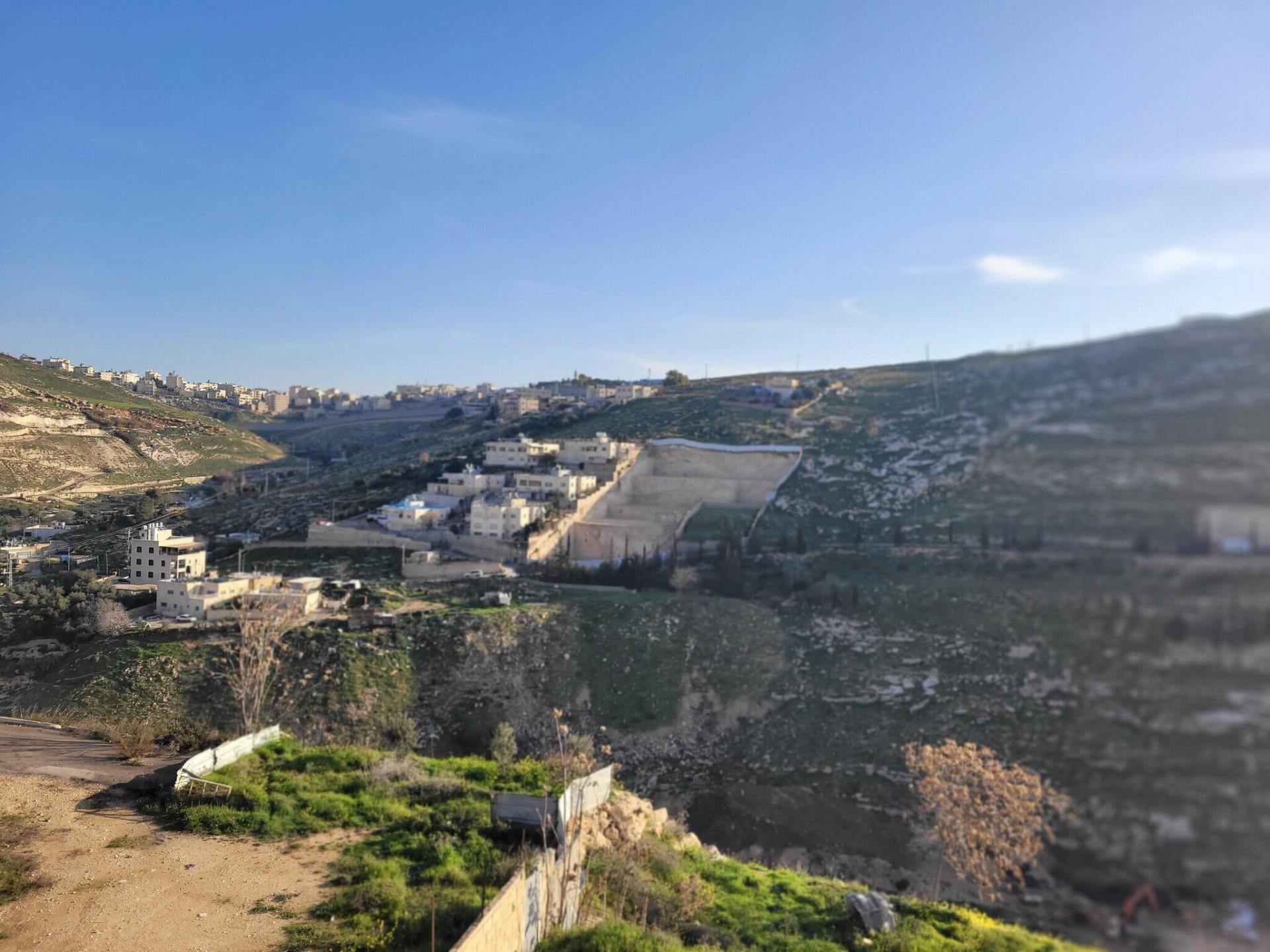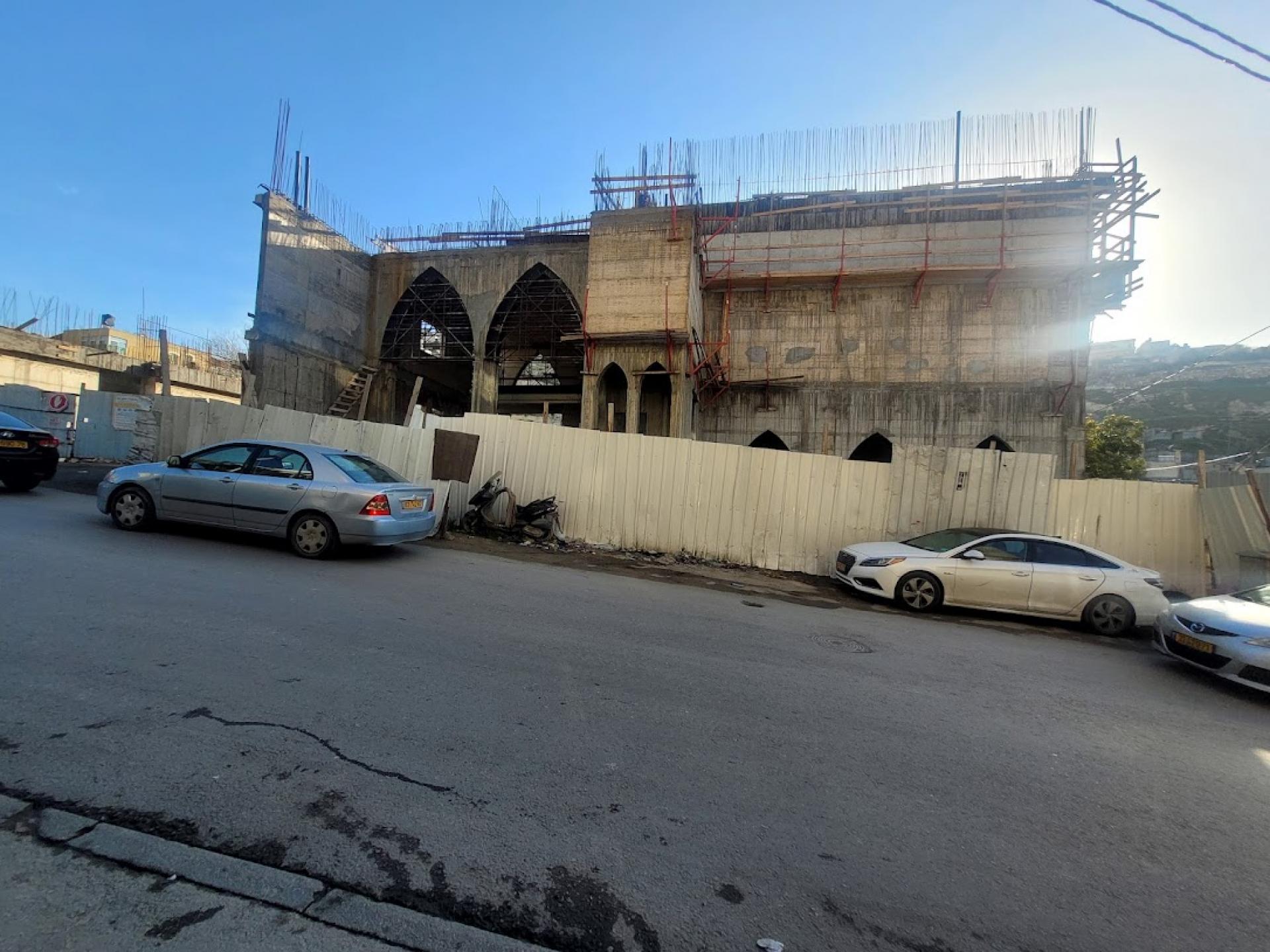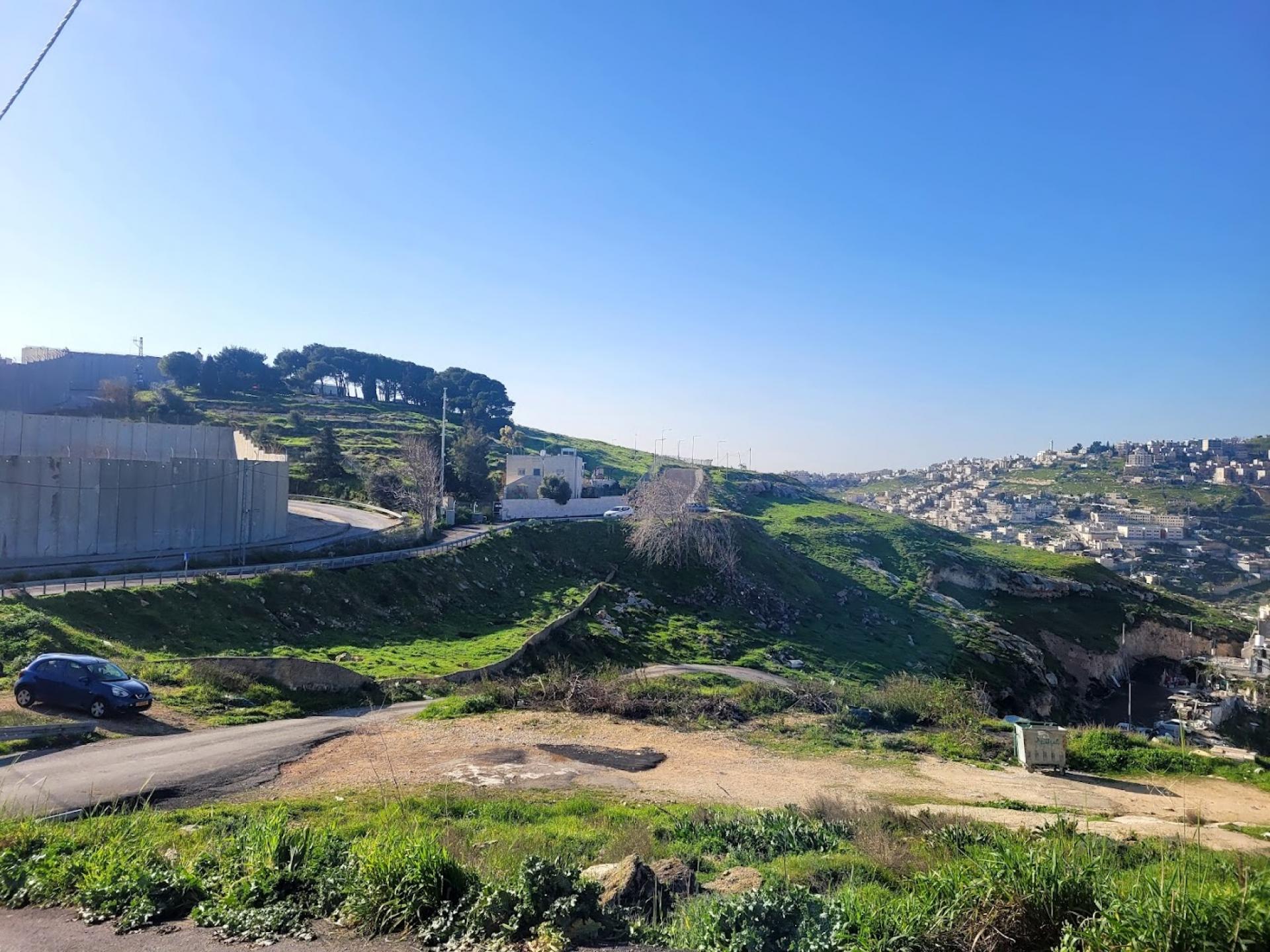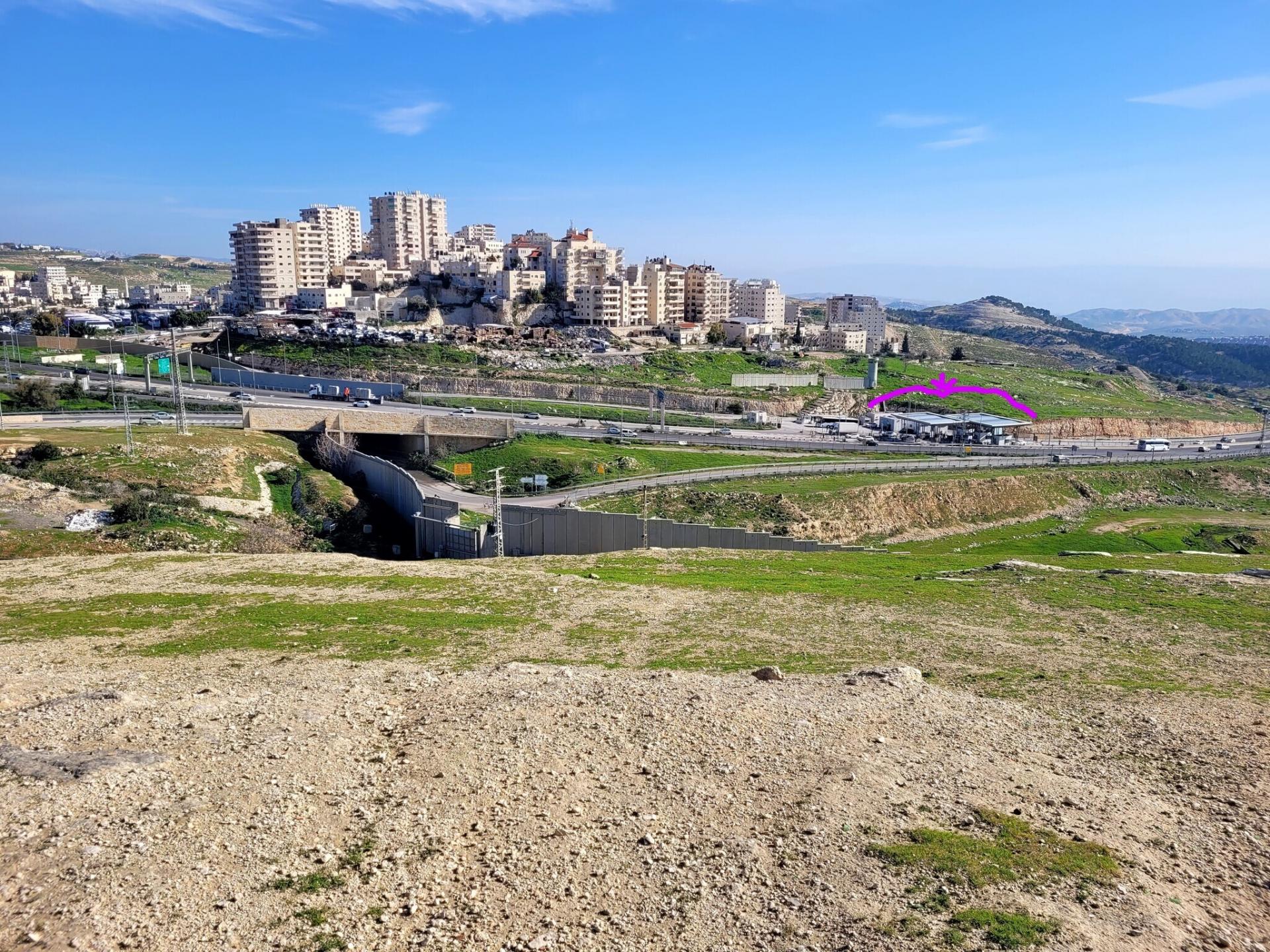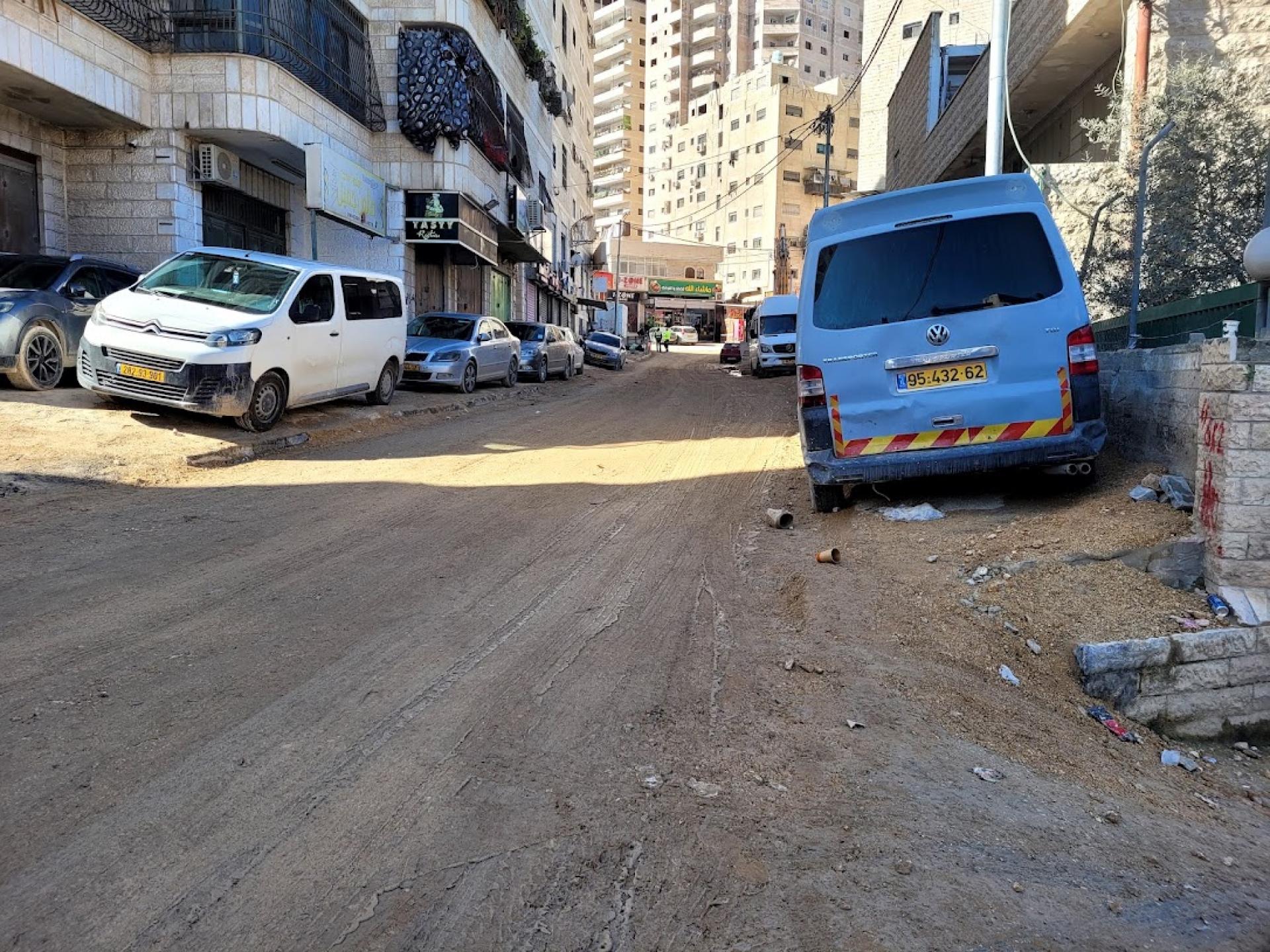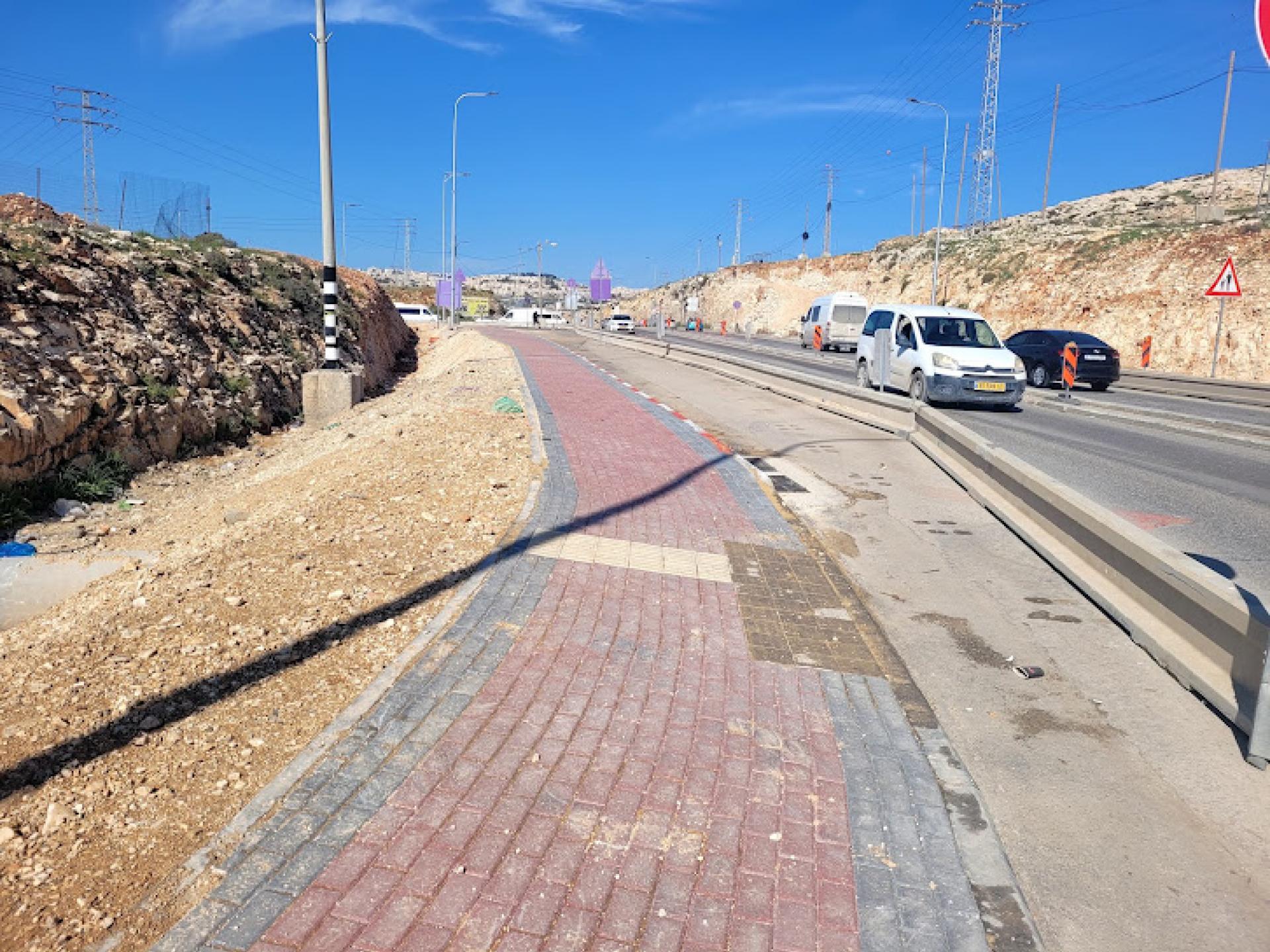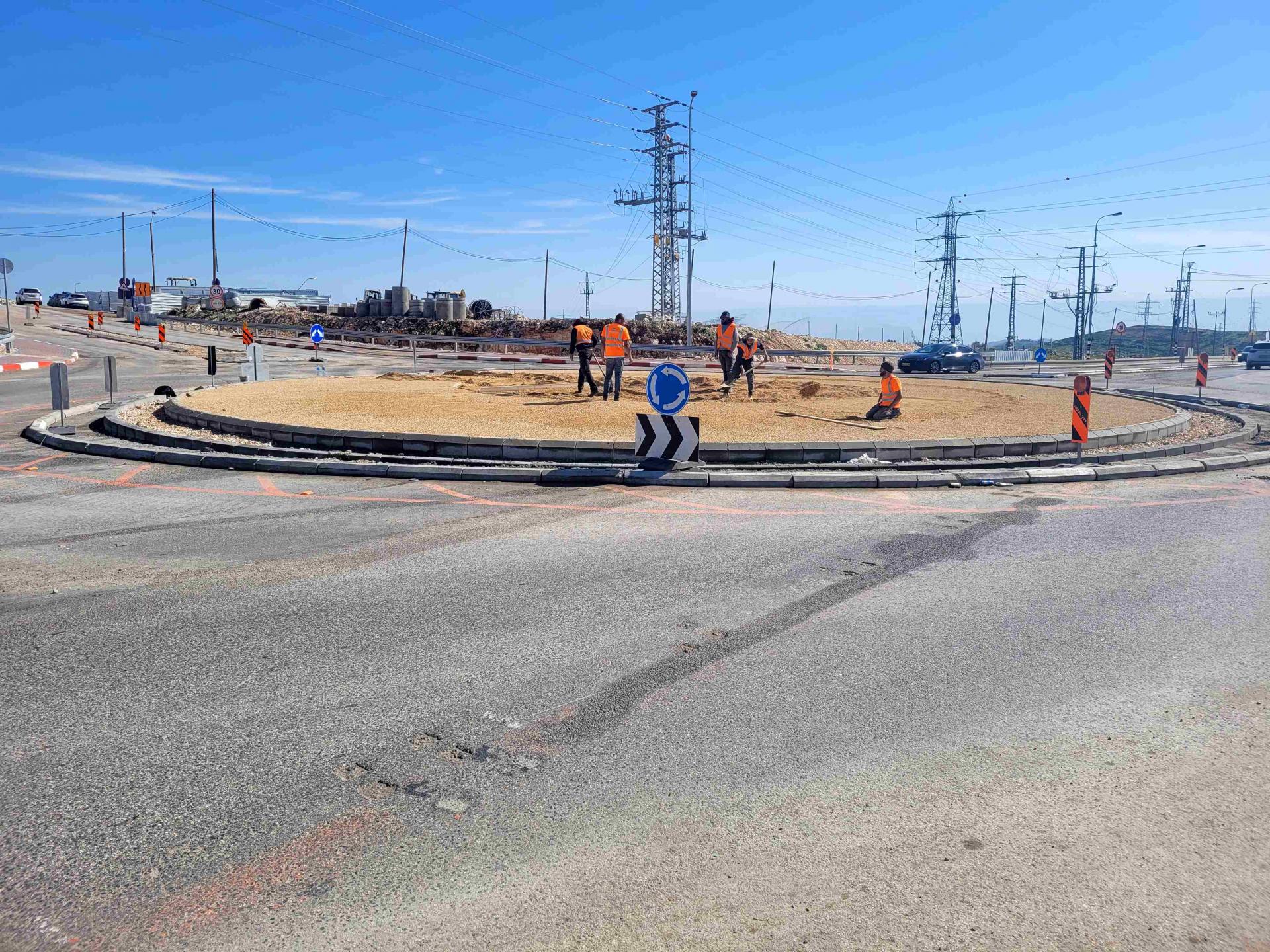Jerusalem, Ras Al Amud: a rare case, a Palestinian developer received a permit for 24 apartments
7:00, Sheikh Sa'ed - Before arriving we received a phone update from N. of the neighborhood committee: only blue card holders from the Jabel Mukaber neighborhood and the adjacent (and blockaded) neighborhood of Sheikh Sa'ed can pass now, with the exception of the students who pass in the mornings without problems. Since the beginning of the war, there is no passage for workers with a Palestinian certificate and valid work permits. Only in the case of an urgent medical appointment does passage to Jerusalem get approved for a Palestinian ID holder. There were house demolitions in Jabel Mukaber during the war, in most cases the people destroyed them themselves so as not to pay dearly for the demolition.
The economic situation in Sheikh Sa'ed is difficult, and there is great concern about the entry bans in Ramadan. The joy of Ramadan was destroyed...
The gray wall serves as a good background for advertising the telephone numbers of taxi services
We met some young workers with blue certificates waiting for a contractor to take them to work. They didn't go to high school, according to them there is no point, because livelihood comes first. They weren't eager to speak with us. Then a border guard jeep arrived, parked noisily at the checkpoint entrance near the wall, and everyone moved away from it. We later met the same jeep near the wall in Abu Dis. They didn't have to travel the narrow, winding and congested road to Ras El Amud. The security road could have solved the traffic problems for the residents of the eastern city, but of course, no.
Ras Al Amud and Abu Dis: We photographed excavations for construction from the American road on the slope opposite. Looks like a mirage. Approved construction? We inquired (truth is, we were afraid it was a pirate settlement).
According to Hagit Ofran, it is a rare case that a Palestinian developer received a permit for 24 apartments.
On our way we also saw a school under construction. It is interesting that it has the architectural features of a mosque. The mayor is proud of this little public construction, him who often approves house demolitions even during the war.
We went up to the "Cliff" hotel which has become a pitiful skeleton surrounded by the separation wall. We looked at the hill with the noble pine trees that abuts the Abu Dis wall. Beyond the wall is the building that was planned to be the Palestinian parliament. There will be built "Kidmat Zion", an initiative of "Ateret Kohanim" which was hastily approved, pending public comment, in an expedited procedure during the war despite previous reservations. 384 housing units that will be stuck in the throat of Al Quds.
A resident of a traditional stone house came out to meet us in front of the Cliff Hotel. He and his wife are alone in the big house. They both have special permission to stay in their home without a blue certificate. The daughter and her children received permits to move between the parents' home and the educational institutions in Azaria. At some point, the administration decided that it was unnecessary and canceled the transit permits and the daughter's family moved to Azaria, beyond the wall. Two months ago, the father was hospitalized in Makassed in Jerusalem due to a heart attack. The daughter was not allowed to visit him.
The Olives checkpoint: The clearest sign that there are almost no passers-by at this checkpoint is that the shuttle conductor and buses are absent from the scene. We climbed the hill to overlook the a-Za'im checkpoint, in which the last attack took place near Ma'ale Adumim. In the mornings there are huge queues of Israeli cars from the Dead Sea region, the valley and Ma'ale Adumim. These queues were used by terrorist youths from villages in the Hebron area to shoot at those stuck in traffic jams. They were of course not allowed to cross into Jerusalem through the a-Za'im checkpoint, but right before the checkpoint there is an entrance to the road for Palestinians only towards Anata and from there to a Palestinian area leading to Ramallah. That was enough. Now the crossing to Anata is blocked, and they added one or two checkpoints before A-Za'im (we will go to check soon).
Following the attack - the entire southern area of E1 between Ma'ale Adumim and Keidar settlements was declared within a day as state land - 2,600 dunams from Abu Dis and Al-Ezariya lands - with planning for 1,500 housing units for Jews. There is also an intention to speed up the construction of a road bypassing the E1 area for Palestinians only, which will transport the Palestinians through a tunnel from Za'im to Ezariya and turn the coveted E1 over to Jews only. Is it really possible that divine providence also works in terrorist attacks and everything is for the better?
Anicdote: we noticed a thin and dark water pipe winding between the rocks down the hill towards the separation wall beyond which lies the eastern Abu Dis/Ezariya. We followed it, and wonder of wonders, it pushed through the massive separation wall towards the other side.
Shuafat and Anata refugee camp - the camp is an area without civilian and security supervision, except for night raids by the Security Forces and the demolition of houses. After the heavy rains, the roads are worse than they were. Only blue certificates grant the right of passage. The buses move to Jerusalem, after all their passengers have been unloaded and their IDs checked. Students are checked before boarding buses to schools in Jerusalem.
The border between the Shuafat and Anata camps is not marked, although there are rumors of an internal barrier being erected there. After we asked, Kamal took advantage of the trip to jovially identify "Mashtubot" for us (revived Total Loss cars), many of them.
At the exit from Anata, they are working on a huge traffic circle and the extension of access roads to road 437. As always, we don't know the exact reason for the expansion works - but are quite sure that this was done for the benefit of the settlers who move on these roads and encounter traffic jams.

